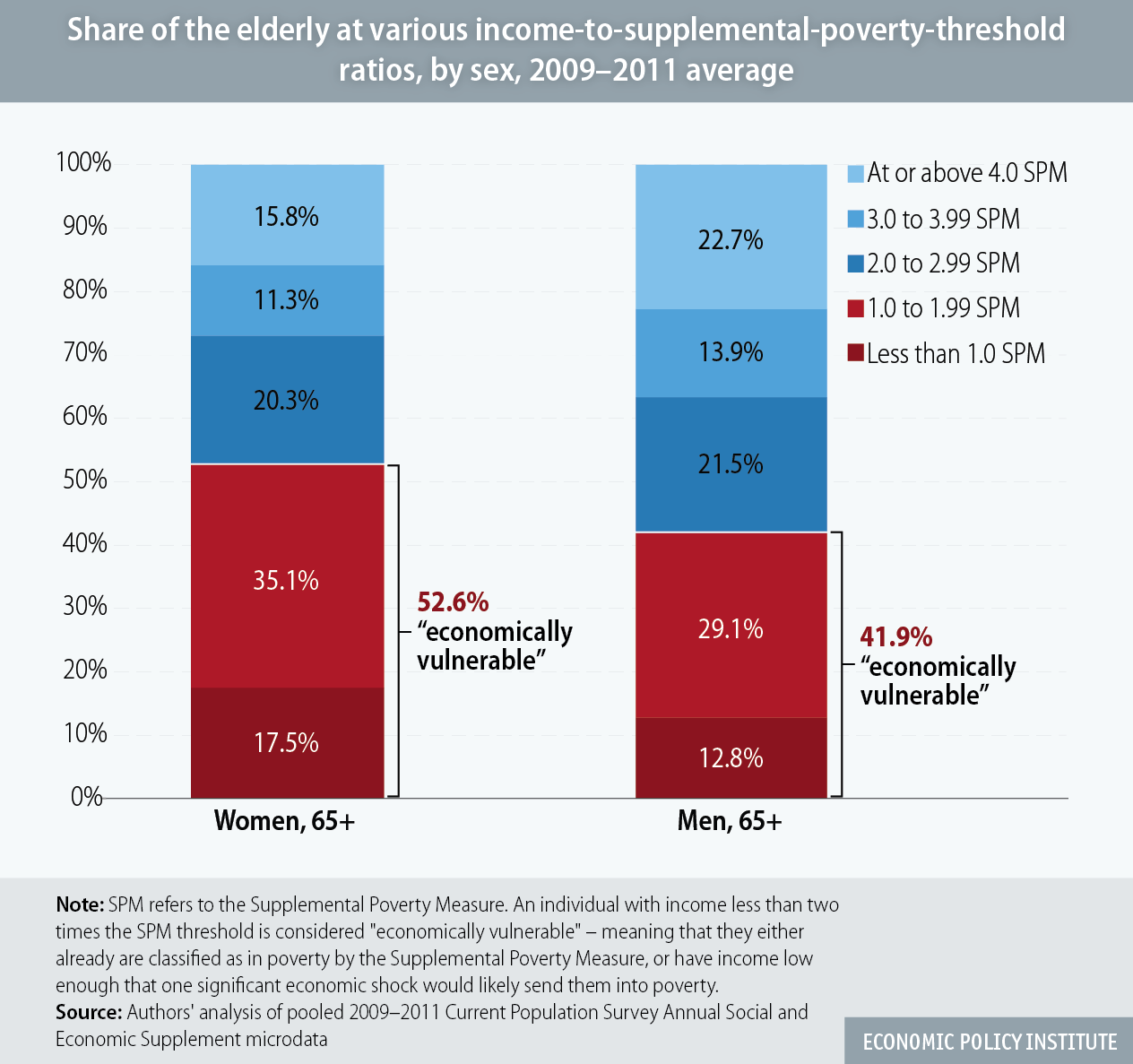Most of America’s 41 million seniors live on modest retirement incomes, often barely adequate—and sometimes inadequate—to cover the costs of basic necessities and support a simple, yet dignified, quality of life. Social insurance programs, primarily Social Security and Medicare, keep the vast majority of the elderly out of absolute poverty; however, many remain precariously close to this threshold. The report Financial Security of Elderly Americans at Risk shows that nearly half (48 percent) of the elderly population in the United States is “economically vulnerable,” defined as having an income that is less than two times the supplemental poverty threshold (a poverty line more comprehensive than the traditional federal poverty line).
While this percentage is alarming enough in its own right, some elderly are more at risk than others. As the figure shows, 52.6 percent of women, ages 65 and older, are “economically vulnerable,” compared with 41.9 percent of men, ages 65 and older. In fact, the shares of men at every level of the distribution above the “economically vulnerable” threshold are larger than the corresponding shares of women, and the shares of men are smaller at every level below the “economically vulnerable” threshold than the corresponding shares of women.

